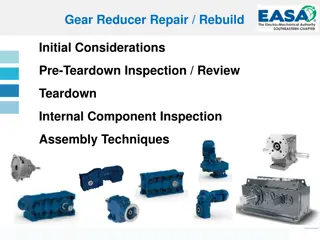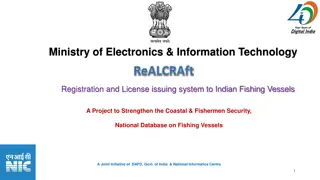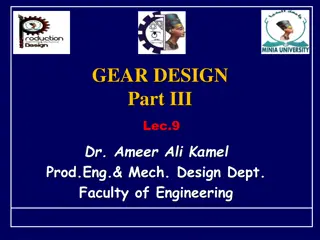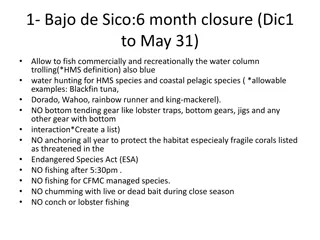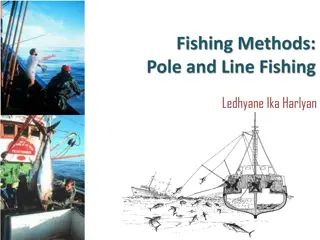Evolution of Fishing Gear Technology: From Traditional Methods to Modern Innovations
Fishing has evolved from a traditional practice to an industrial activity with advancements in fishing gear, vessels, and preservation techniques. Mechanization, starting in the 19th century, led to the use of steam, internal combustion engines, and eventually diesel and electrical/hydraulic systems. Synthetic materials have replaced natural ones in gear fabrication, improving effectiveness and efficiency in the fishing industry.
Download Presentation

Please find below an Image/Link to download the presentation.
The content on the website is provided AS IS for your information and personal use only. It may not be sold, licensed, or shared on other websites without obtaining consent from the author.If you encounter any issues during the download, it is possible that the publisher has removed the file from their server.
You are allowed to download the files provided on this website for personal or commercial use, subject to the condition that they are used lawfully. All files are the property of their respective owners.
The content on the website is provided AS IS for your information and personal use only. It may not be sold, licensed, or shared on other websites without obtaining consent from the author.
E N D
Presentation Transcript
History and development of fishing gears History and development of fishing gears Subject: Fishing Gear Technology Date of Lecture: 14.07.2020 By Dr. Abhishek Thakur (Assistant Professor) College of Fisheries, Kishanganj BASU, Patna
History and development of fishing gears History and development of fishing gears Fishing is the art of catching fish and other aquatic animals. In olden days fishing was not having much importance as there was no demand for fish. Earlier fishing was restricted to a particular community but it is not so now. In order to meet the increased demand, fishing is now carried out industrially.
History and development of fishing gears History and development of fishing gears Fishing technology not only concerns fishing gear, fishing methods and vessels but also concern Biological and Environmental factors. Fishing technology has developed continuously by utilizing improved and larger fishing vessels, more sophisticated fishing equipment and preservation techniques.
History and development of fishing gears History and development of fishing gears Mechanization started in the fishing industry during the second half of the nineteenth century with the use of steam driven capstans. Steam power was successfully used in towing a trawl for the first time in 1877. Steam gradually replaced manual and sail propulsion. This was later superseded by the internal combustion engines.
History and development of fishing gears History and development of fishing gears Today, the diesel engine is universally favored for larger vessels and petrol/kerosene driven outboards for small boat operations. Development of electrical and hydraulic power systems led to complete mechanization of fishing which use larger nets and lines, or more pots and traps.
History and development of fishing gears History and development of fishing gears During the last 50 years, synthetic fibers, which are virtually rot-proof, gradually replaced natural materials in the fabrication of nets and lines. These materials have greatly extended the useful life of fishing gear. Developments in new synthetic materials and fabrication techniques are continuously improving fishing gear effectiveness and efficiency.
History and development of fishing gears History and development of fishing gears Traditionally fishermen detect fish through local knowledge, record keeping, observation of schools breaking to surface, and the behavior of birds and other sea creatures. In deeper waters fishes were detected from the vibration of signal lines dropped from the vessel.
History and development of fishing gears History and development of fishing gears The introduction of electronic fish finding equipment a half century ago has revolutionized the process of finding fish to catch. Aircraft enable much greater areas to be searched visually, while satellite and laser technology are being utilized as aids for identifying suitable environmental conditions. Fish finding sonar and echo sounders rapidly analyse signals from high performance transducers and display detailed information to the fisherman.








